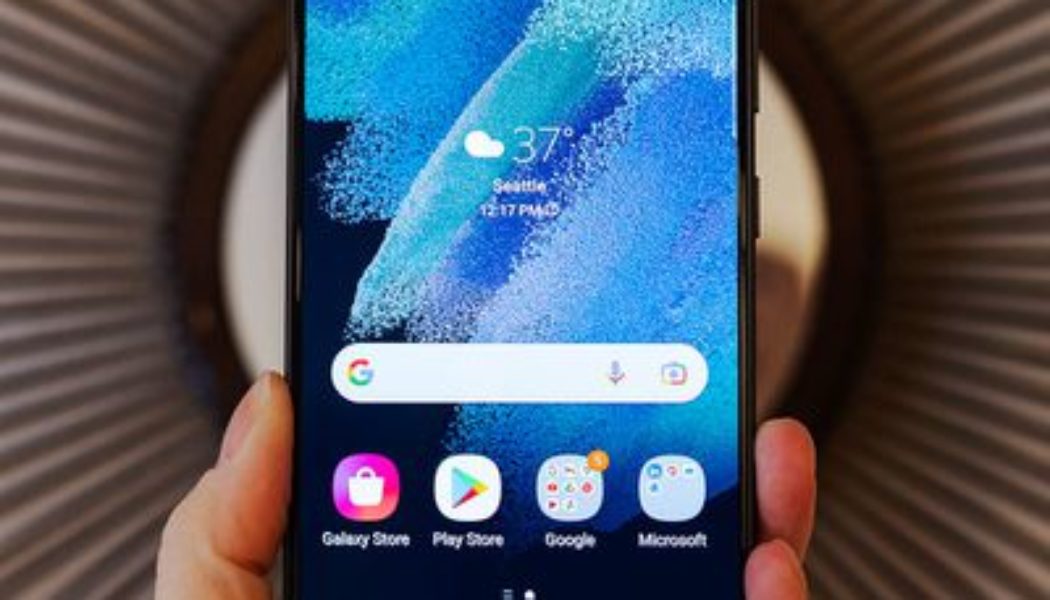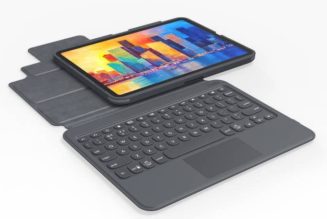There’s a category in the smartphone market that has emerged over the past few years that I’ll call “value flagships.” Buying one feels a little like getting away with something — nearly all the features of a high-end device with a significantly lower price. Phones like the iPhone SE, Pixel A-series, and Samsung’s Galaxy S20 FE are classics of the genre, combining the right features for the right price at the right time. With its second entry in the category — the Galaxy S21 FE — Samsung is just a little off the mark on all the elements that would have made this a great value flagship.
The S21 FE arrives very late in the S21 family’s product cycle, taking some of the shine off of the “this year’s flagship for less” appeal. It also offers just about everything you get from the standard S21, with the exception of a couple fewer gigs of RAM, a lower-quality telephoto camera, and a slightly larger screen. But at $699 it’s also not significantly cheaper than the $799 S21. Considering that the S21 is often discounted and that the S22 is likely to arrive soon, the S21 FE doesn’t look like much of a deal.
No doubt, the S21 FE is a good device. Its Snapdragon 888 processor and 6GB of RAM provide seamless, fast performance for most tasks. A 6.4-inch OLED screen offers smooth scrolling with its 120Hz refresh rate. And even with a big, bright, high refresh rate screen, its battery will take you through a full day. It’s just hard to recommend it to anyone when just $100 more will get you the S21 — and $100 less will buy the very good Google Pixel 6.
:no_upscale()/cdn.vox-cdn.com/uploads/chorus_asset/file/23142237/ajohnson_220102_4951_0002.jpg)
The S21 FE features a 6.4-inch 1080p OLED screen that’s bright and vibrant with rich blacks — classic Samsung. Bezels are very slim, and that 120Hz refresh rate makes animations and scrolling oh so smooth. There’s Gorilla Glass Victus protecting the front panel and the frame is aluminum. A quick, reliable optical fingerprint scanner is embedded in the display. So far, so flagship.
The back is composite plastic rather than a higher-end glass panel, but such is the case with the S21, too. The S21 FE’s camera bump is plastic rather than the metal finish that bleeds into the chassis on the S21, so that’s a little bit of a value concession. But with the other high-end components and a lovely screen to look at, this feels like a device on the very highest rung of the midrange ladder.
There’s a 4,500mAh battery on board that easily lasted through a day of moderate use in my testing. Power users may find themselves in the single digit battery percentage at the end of a day, especially with the screen smoothness setting at its 120Hz default. There’s no option for a variable refresh rate, which would help conserve battery life while using the higher refresh rate setting — just standard 60Hz or 120Hz.
The S21 FE supports 15W fast-ish wireless charging and faster 25W wired charging. A power adapter is not included in the box — just a USB-C cable. The S21 FE doesn’t support fast charging over a computer’s USB port, so if you want the best speeds and don’t have a compatible power brick on hand you’ll need to buy one.
:no_upscale()/cdn.vox-cdn.com/uploads/chorus_asset/file/23142240/ajohnson_220102_4951_0004.jpg)
The S21 FE includes the same top-notch Snapdragon 888 processor as the rest of the S21 series, but offers 6GB of RAM as the base model option compared to the S21’s 8GB. I didn’t see this having any significant impact in day-to-day use; the S21 FE opens apps quickly and jumping between them is seamless. The phone got warm playing Call of Duty Mobile but kept up with the action. The only place I notice a bit of lag is in the live preview using portrait mode on the camera, but that’s a processing-intensive mode and I wouldn’t expect seamless rendering. For most purposes, performance is very good.
The S21 FE ships with Android 12-based One UI 4.0 and all of the new system customization options it has to offer. If you set a photo as your wallpaper, the phone will suggest a complementary color palette to apply to buttons and icons. You can also scale and adjust your homescreen and lock screen wallpaper independently. Best of all, the stock weather app no longer features conspicuous ads at the top of the screen — just some links to clickbaity Weather Channel articles toward the bottom, which I can live with.
:no_upscale()/cdn.vox-cdn.com/uploads/chorus_asset/file/23142239/ajohnson_220102_4951_0003.jpg)
The S21 FE features the same main rear camera — a 12-megapixel f/1.8 module with optical stabilization — as the standard S21. The telephoto camera is different, though, with a much smaller 8-megapixel sensor and 3x optical zoom rather than the S21’s 64-megapixel 3x hybrid digital / optical zoom. Still, it’s a stabilized, true optical telephoto camera, and those aren’t exactly guaranteed in the under-$800 class.
It is possible to take 30x hybrid zoom images with the S21 FE, but the camera is working with a lot less data than the S21, so photos at that length look (predictably) like watercolors. Photos at the native 3x zoom look much better — even in dim indoor lighting, I managed to get some acceptably sharp portrait mode photos with the zoom lens. That is no small feat for a tiny sensor. Personally, I’d prefer if the main camera was the default for portrait mode rather than the zoom, but that might be just me.
The S21 FE’s main camera performs well overall. Photos are bright and saturated, as we expect from Samsung, and night mode renders an impressive amount of detail, provided your subject isn’t moving. It can’t quite match the Pixel 6’s camera for detail retention, in either night or standard shooting modes, and the S21 FE’s warmer, more saturated look isn’t my favorite. It’s not the very best camera in its class, but it does a reliably good job.
There’s an ultrawide camera, too, which is slightly less wide than the S21’s. The 32-megapixel front-facing camera is a fixed-focus affair, whereas the S21’s selfie cam offers autofocus. The first time you use the selfie camera it asks you to choose between “natural” and “bright” color tones. As someone who prefers the natural setting, I appreciate that I didn’t have to dive into the menu to find it. Both the ultrawide and selfie cameras do their jobs just fine, and I don’t suspect that prospective S21 FE owners will care too much about the differences between them and their S21 counterparts.
:no_upscale()/cdn.vox-cdn.com/uploads/chorus_asset/file/23142236/ajohnson_220102_4951_0001.jpg)
Despite all of those positive qualities I just ran through, the S21 FE is a fine phone that makes sense for very few people. Those who don’t have any particular allegiance to Samsung would probably be very happy with the Pixel 6 for $100 less. It meets or exceeds the S21 FE’s capabilities in just about every way — it has a better camera, is built with premium materials on the front and back, includes a little more RAM, and offers comparable performance from its new Google-designed Tensor chip. True, you don’t get a telephoto camera (that’s reserved for the $899 6 Pro) and its top screen refresh rate is 90Hz, not 120Hz. If those features are worth an extra $100 to you, then consider the S21 FE. All others should proceed to the Pixel 6.
If you are a committed Samsung Fan, then you probably don’t mind paying an extra $100 for the S21 to get an extra couple of bells and whistles. In fact, you probably have already. With its lower cost and composite back panel, the S21 is kind of already the Fan Edition of the S21 series.
Still, there’s something to be said for a phone with a very good support policy (three major OS updates and four years of security updates), a decent telephoto camera, and (mostly) top-shelf components that costs well under $1,000. I’d typically steer potential buyers to the Pixel phone for faster software updates, but Samsung appears to be committed to at least getting the major OS updates out earlier than in previous years.
The Galaxy S21 FE leaves me with very little to complain about, but not a lot to recommend it above the alternatives. If you’ve held off this long waiting for it and you don’t want to wait another few weeks to see what the S22 might offer, then by all means buy this phone. But if you’re more of a casual observer than a fan, I don’t think this is the device for you.
Photography by Allison Johnson / The Verge









